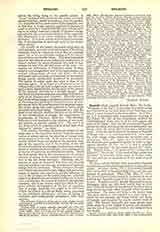

Engaddi (Sept., usually Engadi (; Hebr. ‘En Gedhi, “Fountain of the Kid”) is the name of a warm spring near the center of the west shore of the Dead Sea, and also of a town situated in the same place. In II Par., xx, 2, it is identified with Asasonthamar (Cutting of the Palm), the city of the Amorrhean, smitten by Chodorlahomor (Gen., xiv, 7) in his war against the cities of the plain. Jos., xv, 62, enumerates Engaddi among the cities of Juda in the desert Betharaba, but Ezech., xlvii, 10, shows that it was also a fisherman’s town. Later on, David hides in the desert of Engaddi (I Kings, xxiv, 1, 2), and Saul seeks him “even upon the most craggy rocks, which are accessible only to wild goats” (ibid., 3). Again, it is in Engaddi that the Moabites and Ammonites gather in order to fight against Josaphat (II Par., xx, 1, 2) and to advance against Jerusalem “by the ascent named Sis” (ibid., 16). Finally, Cant., i, 13, speaks of the “vineyards of Engaddi”; the words, “I was exalted like a palm tree in Cades” (en aigialois), which occur in Ecclus., xxiv, 18, may perhaps be understood of the palm trees of Engaddi.
To these strictly Biblical data concerning Engaddi the following notes taken from profane sources may be added. Josephus (Antiq., IX, i, 2) connects Engaddi with the growth of beautiful palm trees and the production of opobalsam. Pliny (Nat. Hist., V, xxvii, 73) places Engaddi only second to Jerusalem as far as fertility and the cultivation of the palm tree are concerned. Eusebius and St. Jerome (Onomastica sacra, Gottingen, 1870, pp. 119, 254) testify that at their time there still existed on the shore of the Dead Sea a large Jewish borough called Engaddi which furnished opobalsam. The name still lives in the Arabic form ‘Ain Jedi, which is now applied to a mere oasis enclosed by two streams, the Wady Sudeir and Wady el-‘Areyeh, and bounded by nearly vertical walls of rock. The former vineyards and palm groves have given place to a few bushes of acacia and tamarisk, and the site of the ancient town is now occupied by a few Arabs.
A. J. MAAS

